Studio Visit
Brazilian Artist Beatriz Milhazes’s Lush, High-Ceilinged Rio de Janeiro Studio Will Give You Extensive Workspace Envy
The artist dishes on the tools she needs to get the job done.
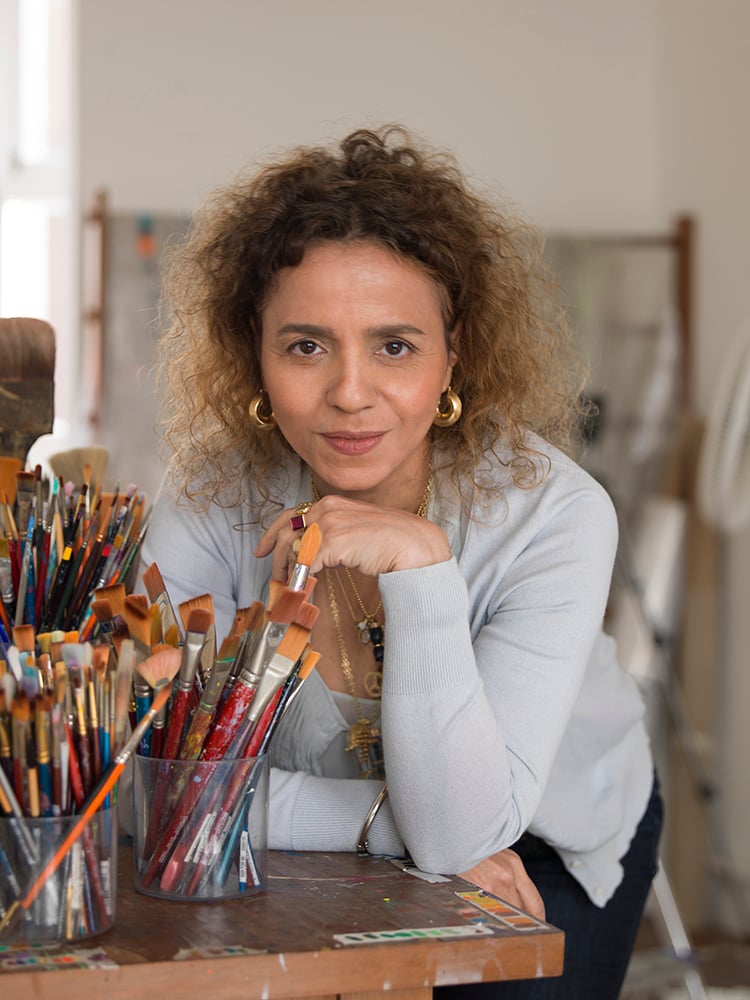
The artist dishes on the tools she needs to get the job done.

Katie White

Inside her Rio de Janeiro studio, Brazilian artist Beatriz Milhazes works in silence—but her studio is anything but a refuge from the outside world. Milhazes’s works overflow with the colors, shapes, and sensations of her homeland, from its towering mountains and turquoise oceans to its bustling cities.
Milhazes first gained notice as a member of the Geração 80 (’80s Generation), a group of Brazilian artists who eschewed conceptual art in favor of a return to painting. Now 62 years old, Milhazes has earned international acclaim for her colorful, upbeat abstractions that span painting, collage, and printmaking.
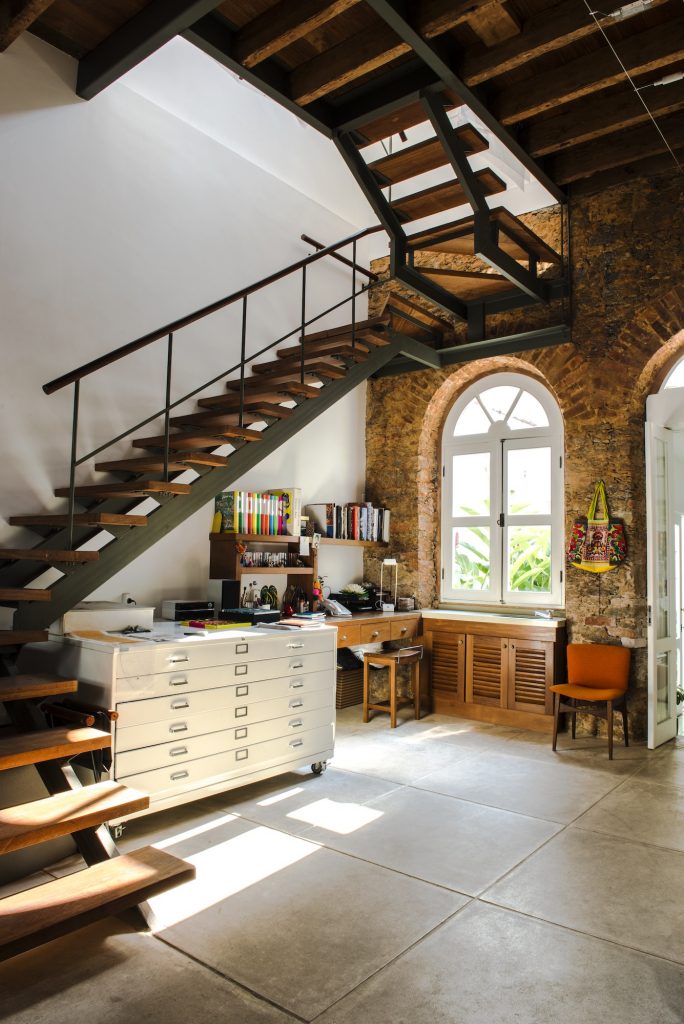
Inside the Beatriz Milhazes atelier. Photograph by Vicente de Mello.
Pushing Brazilian motifs into abstractions, Milhazes’s works reflect art-historical influences ranging from Baroque decorative arts to the Brazilian Antropofagia art movement of the 1920s.
From her studio in the Jardín Botanico neighborhood of Rio de Janeiro, we spoke with Milhazes recently about her process, her love of quiet, and her distaste for snacks.
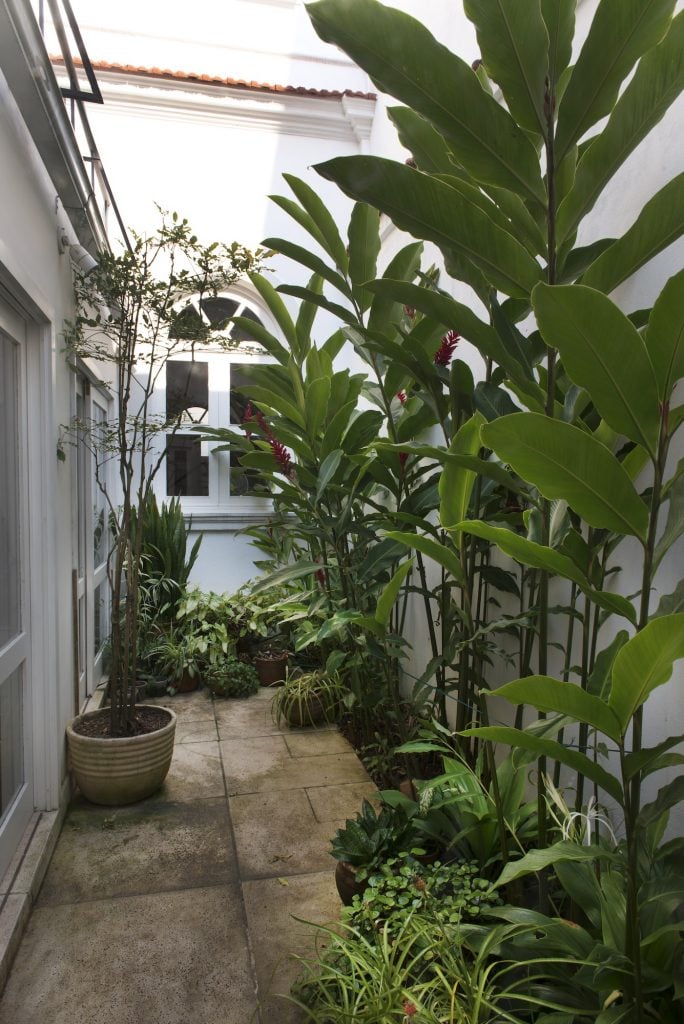
Inside the Beatriz Milhazes atelier. Photograph by Vicente de Mello.
What are the most indispensable items in your studio and why?
Peace. And my working tools, which are indispensable by necessity: canvas, paints, and brushes, as well as different kinds of ladders and compact scaffolding. It is also essential to have good and proper light in the studio and a cozy atmosphere; it is my second home or even my first…
Is there a picture you can send of your work in progress?
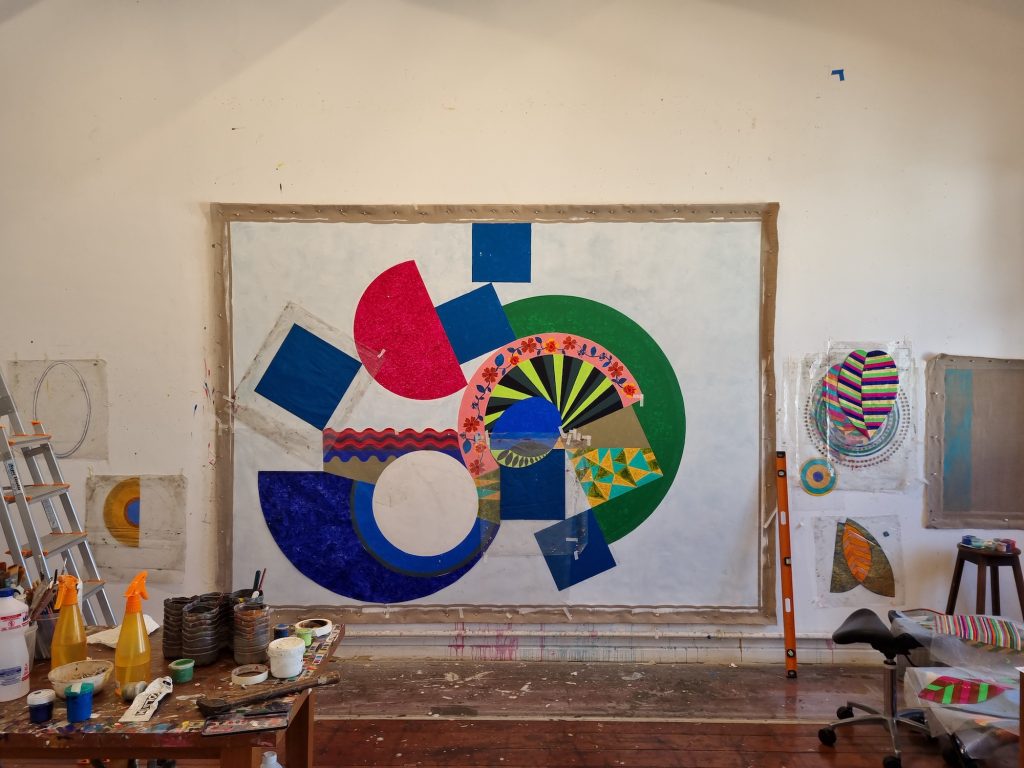
Photograph by Marcos Serrano.
What is the studio task on your agenda tomorrow that you are most looking forward to?
I am about to finish one work and start a new one. Two specific, special, and also delicate moments. To finish a work, deciding that it is ready is a crucial moment, a highly defying one; the moment of the “final dot.” The opposite is the beginning. The white canvas is so attractive. At this point, one may make everything and anything. The canvas is a whole new world opening up…. It is also a great challenge.
What kind of atmosphere do you prefer when you work? Do you listen to music or podcasts, or do you prefer silence? Why?
I prefer silence, but as I am not always alone in the studio, the radio is the second-best option. We listen to good music or news updates.
What trait do you most admire in a work of art? What trait do you most despise?
What I admire the most is when I can find an understanding of the artist’s thoughts and their place in art history so that I can move forward—a sense of innovation. I despise works that are not visually accessible, and that cannot be understood or seized by the viewer.
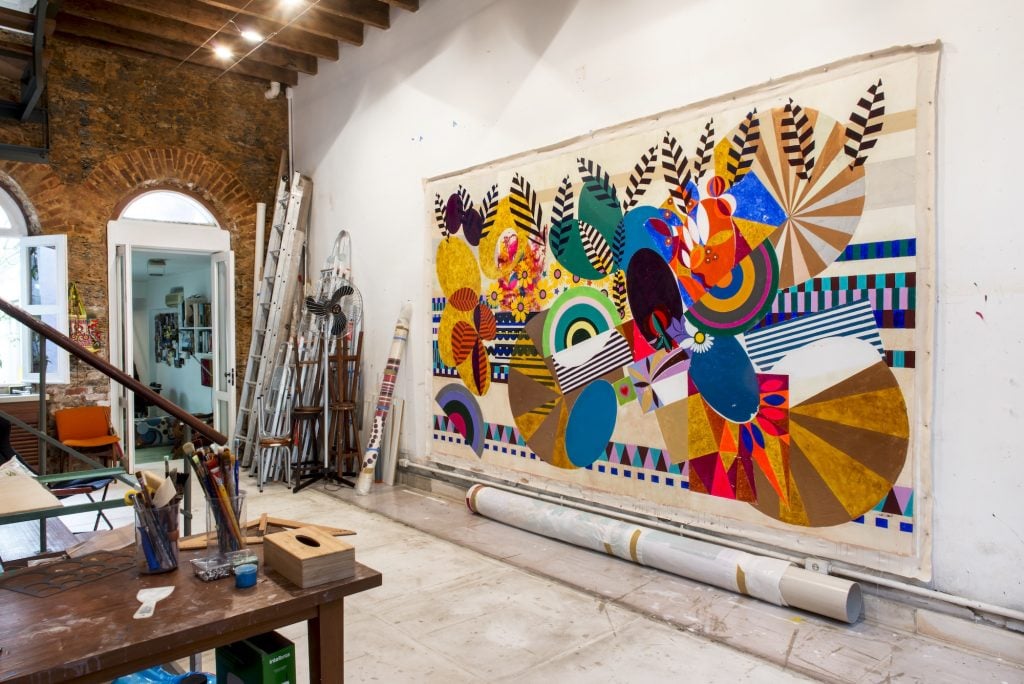
Inside the Beatriz Milhazes atelier. Photograph by Vicente de Mello.
What snack food could your studio not function without?
I’m not really into snack food. I could say that nutrition is a kind of hobby of mine, actually. I am very interested in—and I enjoy having—proper, well-balanced meals.
When you feel stuck in the studio, what do you do to get un-stuck?
Moments like that require a lot of attention and concentration. When I’m not certain how I should go on, I have to be very careful not to destroy what is already there. Sometimes it takes quite a lot of time and thought before I can continue.
What is the last exhibition you saw that made an impression on you?
Two shows come to mind: one, an exhibition of works by Alfredo Volpi, and the other, a show of works by Abdias Nascimento, which are both now at Museu de Arte de São Paulo (MASP).
If you had to put together a mood board, what would be on it right now?
While I am very happy and peaceful within my “small world” of the studio, I would juxtapose this with the painful uncertainties of the future of our world and of Brazil.